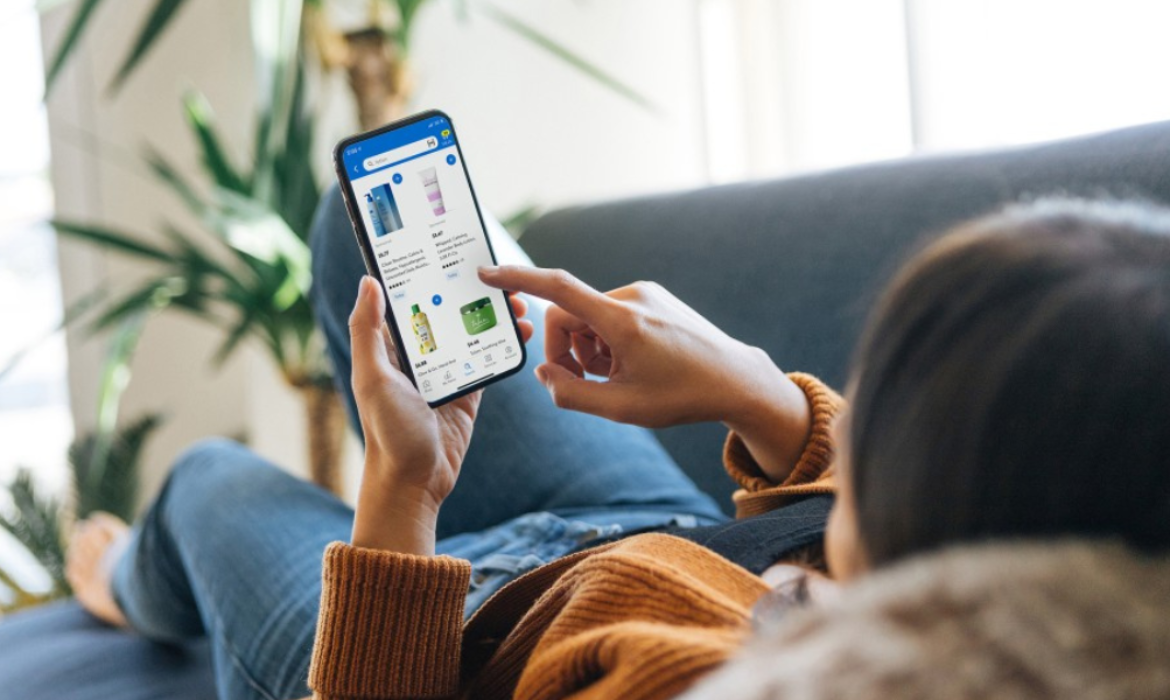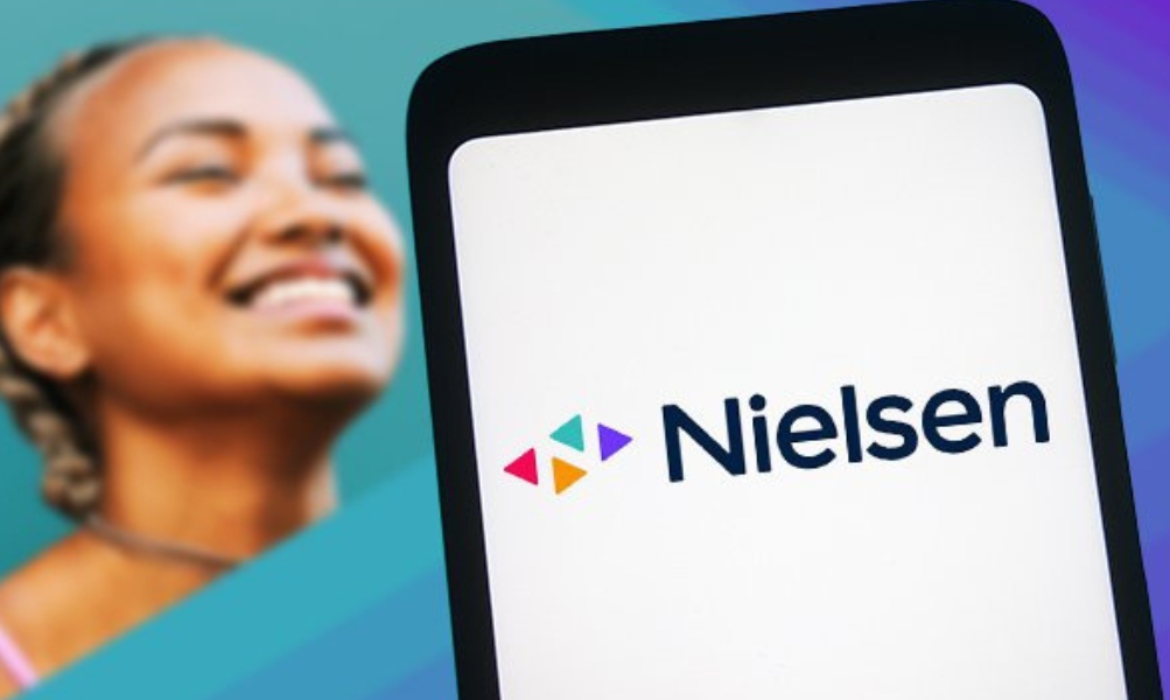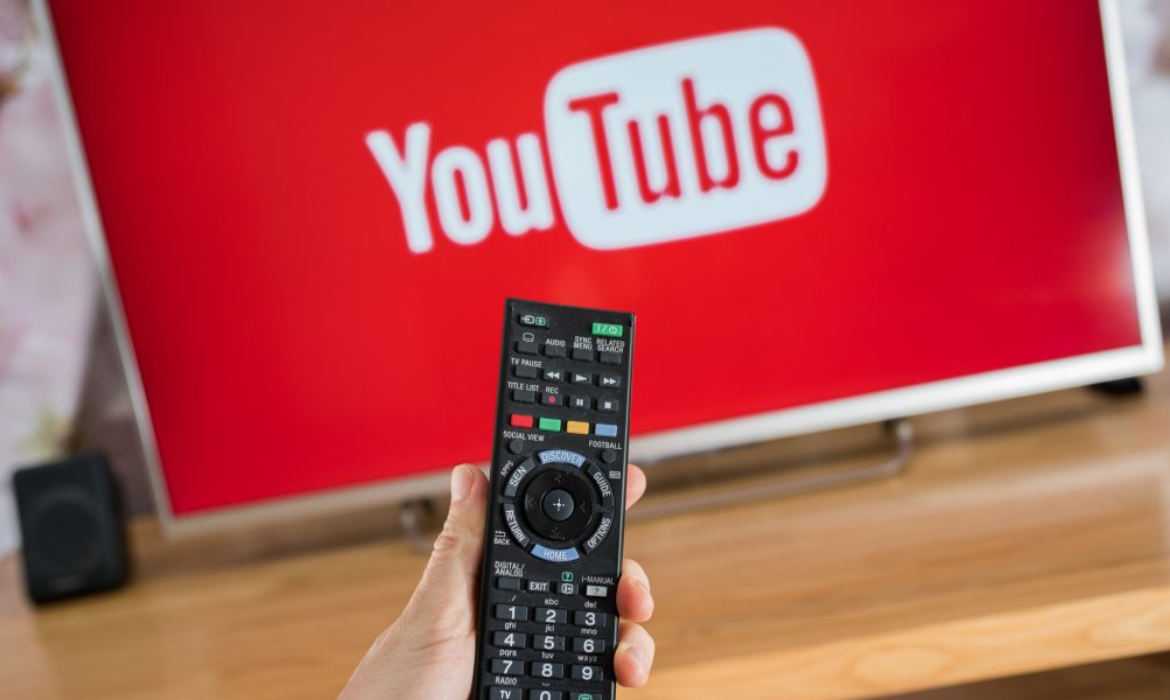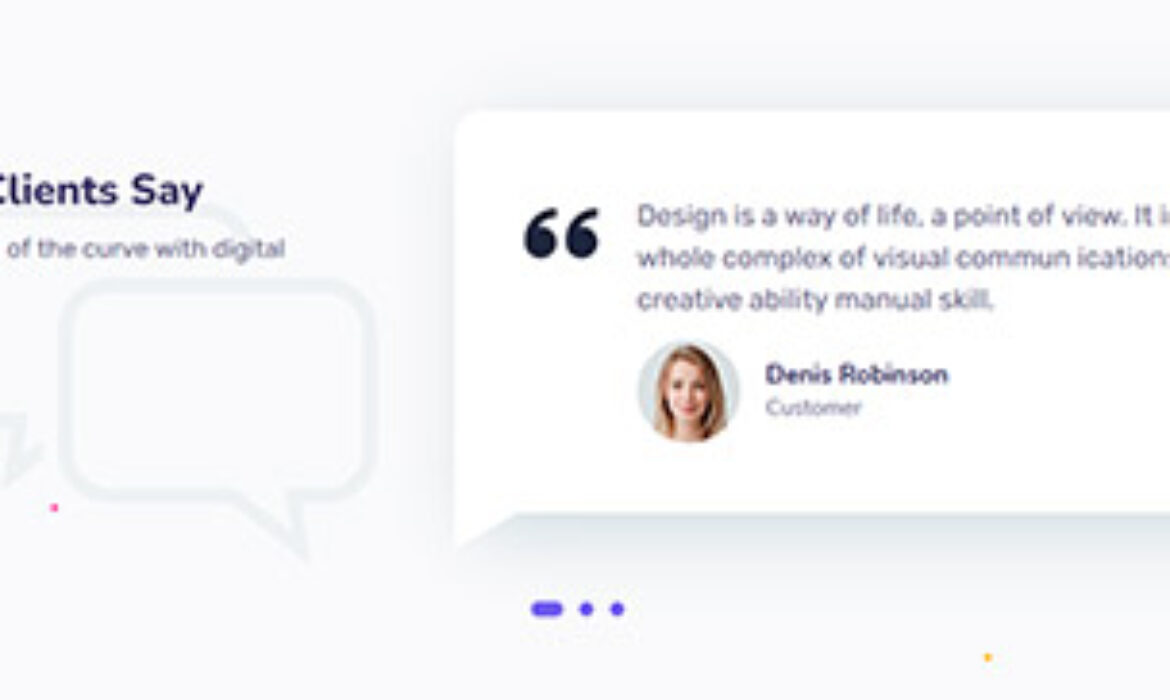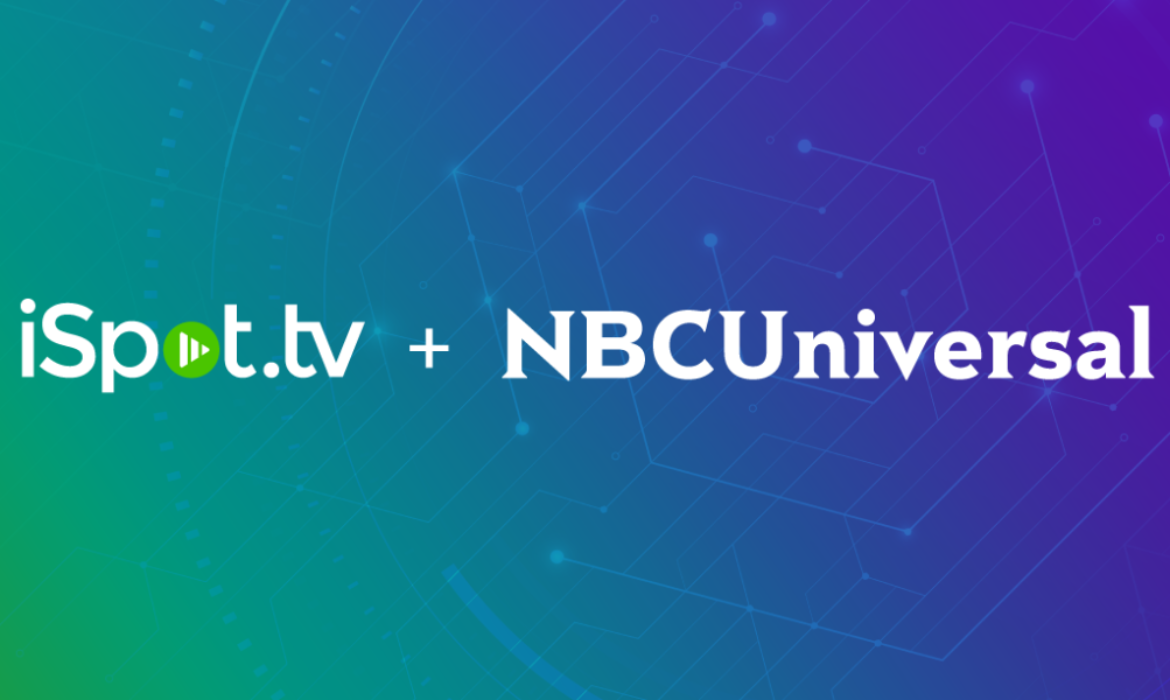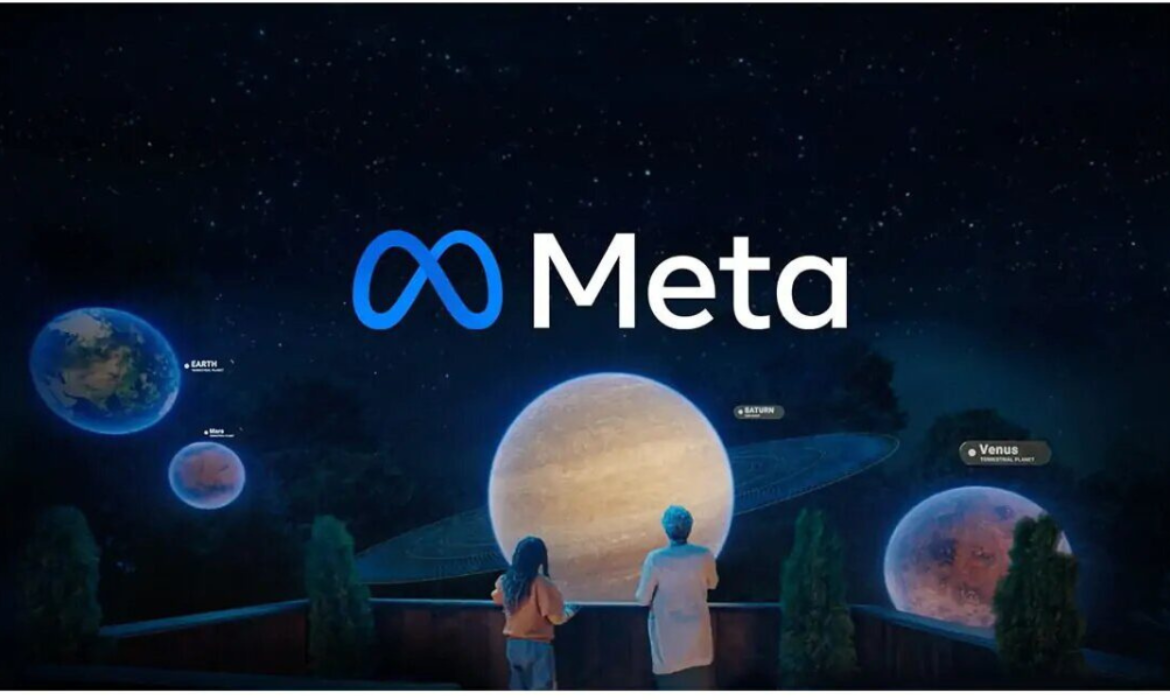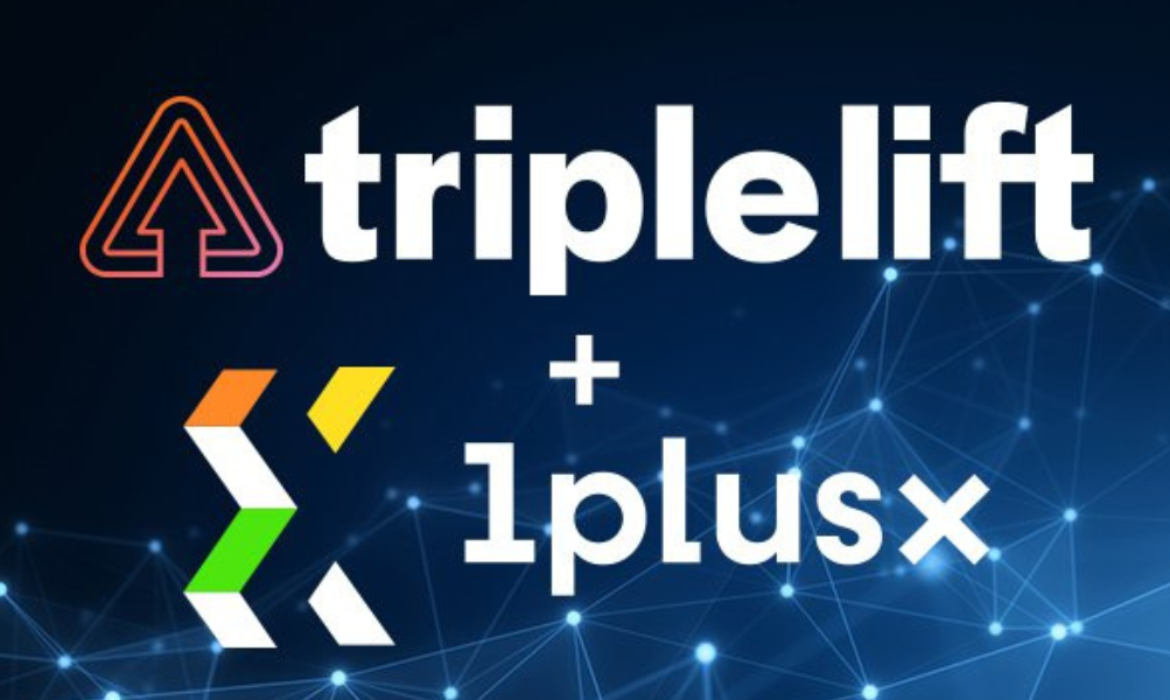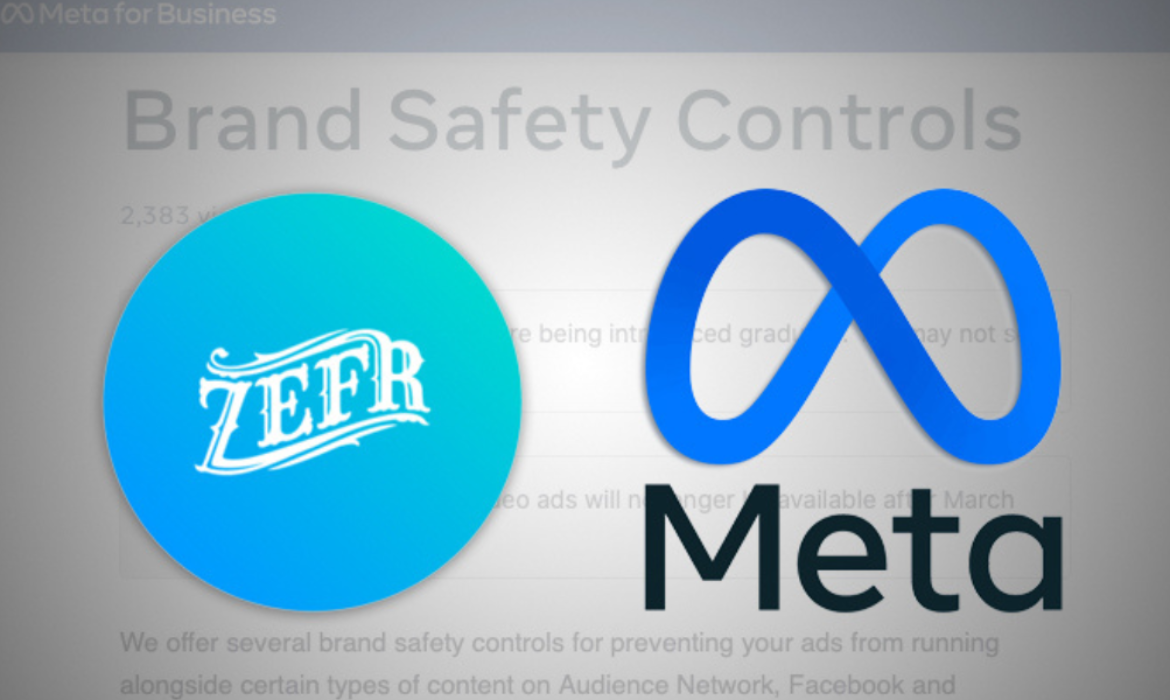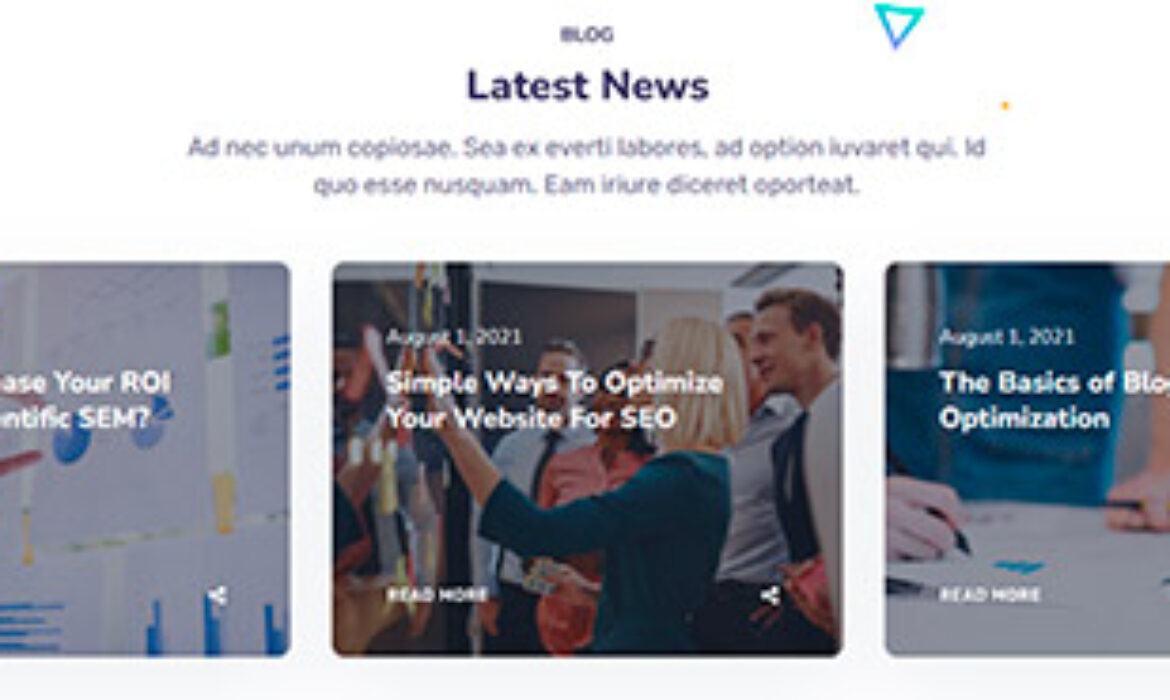Walmart Connect: Walmart’s Ambitious Advertising Plans For Its Programmatic Platform
Retail giant Walmart plans to build out its Walmart Connect advertising platform this year and is creating multiple new channels for advertisers to engage directly with its customers.
Walmart has improved its internal advertising prowess over the past several years, with retail media becoming increasingly important. On Walmart’s earnings call, the retailer discussed its global advertising business and how Walmart Connect, its United States arm, plans to innovate this year. In the fourth quarter ended Jan. 28, Walmart’s global advertising business reached $2.1 billion and active U.S. advertisers increased by 136%.
Interesting Read: 5 Ad Industry Trends That Are Likely To Unveil in 2022!
The meaning of meaningful connections
The digital media presence is a tempting opportunity for advertisers. Big retailers have also stepped up their advertising offerings. These efforts imply an additional revenue stream derived from first-party data, as well as confidence that the retailers’ customers have more attention to spare for additional advertising.
Reach: Walmart states that 90% of American households with them in-store or online. Also, claims that more than 150 million customers shops every week. In a company blog post, Walmart Connect SVP and General Manager Rich Lehrfeld describe the connections the company is making between its customers, suppliers, and sellers.
“Our mission at Walmart Connect is to help brands and sellers meaningfully connect with these customers on their shopping journey – wherever that occurs – to find the right product or discover a new one.”
Walmart lists that these meaningful connections occur in omnichannel ways- stores, websites, apps, or the internet. Of course, the retail giant’s own digital properties play an extensive role in the journey that includes search and native display ads as well as social media.
Social Media: The #GetTheWChallenge for the football fans on TikTok to inspire their shopping for the Big Game.
AR Experience: The retail giant tapped customer attention using AR technology where they discovered new products through Walmart’s Gift Finder during the holiday season. They also purchased ingredients through co-created shoppable Pinterest recipes.
Expand Touchpoints: Walmart Connect plans to expand the touchpoints for customers to view ads and the types of advertisements they see through CTV, video, and omnichannel experiences, such as self-checkout screens, in-store events, sampling, and TV Walls. Moreover, Walmart.com will launch premium advertising experiences by the end of the year, including video and onsite advertising.
Interesting Read: 6 Data Privacy Trends To Look Out For In 2022!
Unlocking growth for suppliers and sellers
Suppliers and sellers will be able to reach customers more efficiently with automation. Lehrfeld explained,
“We recently rolled out Display Self-Serve to our first phase of advertisers, giving them more speed, flexibility and control with their display campaigns.”
Walmart Platform Partner program will also be expanded to assist sellers in scaling, automating, and optimizing search campaigns. Furthermore, Walmart Demand Side Platform (DSP) will be presented to more advertisers and will enable them to purchase offsite inventory in one place.
Its blog post explains that improving targeting and search capabilities will give advertisers more impact and customers a better experience. It will also be able to offer a more comprehensive end-to-end offering by expanding its measurement capabilities across its portfolio. Lehrfeld concluded
“We’re laser-focused on evolving Walmart Connect’s solutions to help advertisers make every media moment a retail moment, by connecting with customers in a meaningful way at any point in their shopping journey.”.
Interesting Read: Bridging The Gap: Is YouTube Unifying Linear And CTV Ad Buying?
Is Measurement Giant Nielsen $16Bn Buyout A Hope For Turnaround?
The 99-year-old TV rating giant, Nielsen announced that it has agreed to be acquired by private equity.
Why we care
This deal enables Nielsen to continue its transition from linear to digital media measurement without the intense scrutiny of the private markets. Nielsen and the consortium began negotiating earlier this month. Nielsen rejected the combined offer of $9 billion, raising the bid to $16 billion to get the deal done.
Details: The PE consortium is headed by Evergreen Coast Capital Corp, an affiliate of activist investor Elliott Investment Management, and Brookfield Business Partners. It is buying Nielsen for $28 per share or $16 billion in an all-cash transaction, including the assumption of debt.
- The statement said the company’s Board of Directors voted unanimously to support the acquisition proposal, which is a 10% premium over the Consortium’s previous proposal.
- Even though Nielsen must invest in innovation, it also needs to make money on these acquisitions so that stockholders can receive a 60% premium over Nielsen’s share price before market speculation over the potential transaction.
Interesting Read: Here, There, Everywhere, It Is Cross-Screen Advertising!
The bigger picture
The PE is not acting as a ‘white knight’ to Nielsen by giving it capital. Industry experts suggest the consortium could take a cue from the PE playbook as the goal is to create a more streamlined entity focused on its strong point “panel-based ratings.”
- However, to preserve Nielsen’s dominance, the new owners would require to face the pressure of additional investments or aggressive pricing which may eat the profits, at least for the short term. They could invest in continuing the new platform ‘Nielsen One’ (which is in the midst of the testing phase), which aims to measure audiences as they watch programming in both a linear and digital manner, something that the industry has long desired. Also, possibly try again to obtain Media Rating Council accreditation.
- Yet, time is ticking. Nielsen is under unprecedented pressure to modernize its media measurement capabilities as new firms launch to threaten its market share. Not to mention this year’s upfronts are right around the corner, and many of the largest programmers, including NBCU, and Warner Media have already signed for alternate measurement providers to give marketers the cross-platform currency and transparency they want.
- Nielsen would need to make a “clear message” about the capabilities of its unified platform ahead of the upfronts in order to maintain its competitive edge – and that’s unlikely to occur soon
- Thus, the reinvention of Nielsen at this stage is a somewhat dubious proposition. Hence, to profit -from this deal, it seems likely that the new owners will ride Nielsen’s “cash cow business” ( panel ratings) and sell off its (if any) technology. Presently, the future of Nielsen seems undetermined but industry experts believe the acquisition will create more competition.
Interesting Read: Bridging The Gap: Is YouTube Unifying Linear And CTV Ad Buying?
That’s what they said
Jesse Cohn, a managing partner, and Marc Steinberg, a senior portfolio manager, on behalf of Evergreen and Elliott, said in a statement,
After months of deep market analysis, industry diligence and management reviews, we are firmly convinced that Nielsen will continue to be the gold standard for audience measurement as it executes on the Nielsen ONE roadmap. Having first invested in Nielsen nearly four years ago, we have a unique appreciation for the Company’s ongoing relevance to the global, digital-first media ecosystem. Today’s outcome represents a significant win for Nielsen’s shareholders and for the business itself, as our multibillion-dollar investment will help Nielsen reinforce its transformation at this critical inflection point.
Interesting Read: AdTech Vs MarTech: Let’s Settle This Once For All!
Bridging The Gap: Is YouTube Unifying Linear And CTV Ad Buying?
The television advertising industry has undergone tremendous changes, especially during the past two decades. The consumption of streamed content is soaring, and the traditional methods of purchasing and selling TV media have evolved substantially. Even though the lines between TV and digital advertising are becoming increasingly blurred, they remain separate. YouTube moved its YouTube Brandcast event to the same week as the Upfronts, making the distinction between the two essentially invisible.
Today, users neither watch the same content nor at predetermined times. They have the power to watch anything they want, anytime and anywhere. According to a recent study, 82% of households in the US have at least one connected TV (CTV) device.
Interesting Read: 26 Stellar Video (YouTube) Advertising Examples To Take Creative Inspiration From!

Image Credit: Marketing Charts
The popularity of Connected TV(CTV)has increased drastically. However, it does not imply linear TV is dead. 51% of viewers think of streaming as an addition to watching traditional TV, not a replacement.
So Does YouTube’s timing of Brandcast mean the end of traditional TV? Perhaps it is simply asking everyone to stop treating linear and cable TV as completely separate entities. Consumers want both. Advertisers need to take this into account when planning media buying strategies.
Interesting Read: Connected TV Explained: The Essential Glossary Of CTV
What does YouTube’s stance mean for the advertising industry?
YouTube has surpassed Netflix to become the second-largest CTV player in terms of time spent watching. There is no doubt that demand for CTV is growing at a rapid pace both from advertisers and consumers. Thus, ad tech vendors must not only bridge the gap between linear and CTV buying, but also develop innovative methods to measure, analyze, and deliver that supply.
YouTube had also been a mainstay of the IAB’s NewFronts for more than a decade. It recently announced that its Brandcast will take place during the same week as the TV Upfronts. This also sends a message to TV traditionalists that “We are here only and not going anywhere.” Perhaps, it also serves as a link between linear and connected TV(CTV), which allows advertisers to reach a larger portion of their target audience on TV.
Linear and CTV Ad Buying
CTV viewership is expected to rise in the coming years, but that doesn’t mean traditional television is doomed. Video consumption online will persist as viewers increasingly turn to big screens to accommodate changing needs. Indeed, viewers are expecting cross-platform experiences. Consider the recent Super Bowl.
Although traditional television ratings were high, they did not break any records. Many users chose to stream. NBC data shows 11.2 million people streamed this year’s game. Youtube revealed the most viewed Super Bowl campaign is from Amazon, with this Alexa ad that exceeded 68 million views.
In the future, ad dollars will need to be split between CTV and traditional TV. It’s all one simple TV screen to the consumer, whether the content is delivered via the internet or a cable box. Media buyers should treat it as one and the same thing to strategically reach these consumers, irrespective of the viewing platform. If YouTube (being one of the big CTV players) is finding ways to bridge the gap then certainly they should also take a leap of faith even if they face resistance from traditional TV advertisers.
Media buyers are often demanding interoperability across TV viewing environments and platforms. Connected TV (CTV) has traditionally been viewed as an “add-on” to traditional linear campaigns, but with increased interest in CTV, both platforms are now on a more equal footing. At the end of the day, brands and media buyers need to understand and adapt to the changes that are essential for success in the advertising industry.
Interesting Read: A Look Ahead: Convergence Of Linear TV And Digital TV Advertising
Outbrain expands strategic partnership with Microsoft
Outbrain Inc., a leading web recommendation platform, announced the expansion of its global partnership with Microsoft. It will leverage Microsoft Azure for improved results encompassing services, technology, and business initiatives.
Why we care:
As a long-standing Microsoft partner, Outbrain has a wide range of advertising and technology integrations that span MSN, Microsoft 365, Xbox, and Microsoft Bing. Outbrain will be working with Microsoft Azure for a multi-year period to accelerate the fast-paced development of its media platform.
Details:
Outbrain’s platform serves 1 billion consumers worldwide with over 10 billion recommendations and ads daily, generating more than 1.5 million engagements per hour spanning over 7,000 media partners.
A multi-year strategic partnership with Microsoft aims to foster Outbrain’s global expansion, fast-track development cycles, and improve connectivity between its advertisers and publishers, especially its programmatic bidders.
This collaboration will support Outbrain’s business and innovation capabilities, enhancing its already extensive data with a rich set of tools and services, ultimately helping Outbrain to better serve its customers with improved business outcomes.
Interesting Read: Is Microsoft Reinventing Its Ad Business With Massive Acquisitions?
And that’s what they said:
David Kostman, Co-CEO of Outbrain expressed his excitement over the extended partnership and said,
“We share the mission of supporting independent journalism and the open web. Over the course of the last decade, we have worked together to serve publishers and advertisers with high quality solutions across the globe. Extending our partnership with Microsoft to include Microsoft Azure technology as part of our hybrid cloud platform will drive innovation and deepen the relationship between our companies.”
Rob Wilk, vice president, Microsoft Advertising said that Outbrain has been an important part of their ecosystem since 2012. He further added,
“The company’s focus on delivering innovative advertising products and programmatic solutions has helped expand our business in several areas over the last few years. We’ve been impressed by Outbrain’s platform, scale, and technology and are pleased to see Outbrain embrace Microsoft Azure and look forward to how it will improve performance for advertisers in Microsoft’s growing advertising ecosystem and on the open web.”
Interesting Read: 5 Ad Industry Trends That Are Likely To Unveil in 2022!
NBCUniversal, In Latest Blow To Nielsen, Elevates iSpot To Ad Currency
NBCUniversal will offer iSpot’s data as official currency at its upfront in May. This expansion is part of the company’s relationship with ad-tracking firm iSpot.
Here is why it matters
In a blow to Nielsen, the longtime predominant ad currency, NBCUniversal will activate iSpot.tv’s cross-platform audiences as currency for national ad buys. Comscore will be the currency for local ad buys.
- In the face of the advertising industry’s transition from legacy systems that have struggled to adapt to streaming media, NBCU has been one of the most aggressive incumbent media conglomerates trying to revolutionize TV measurement and advertising.
- Kelly Abcarian, EVP of Measurement & Impact for NBCU, declared during the company’s “One22”- a tech-style advertising innovation summit,
We’re heading to Radio City, and this year’s upfront, ready to activate against iSpot’s cross-platform audience. Our long-awaited, multi-currency future has finally arrived. We’ve got the technology. We’ve got the data. And we’re ready to help today.
Interesting Read: TikTok and NBCUniversal Collaborate for the Winter Olympics
Details
- Ad partners of NBCU can use the data from iSpot.tv as its currency to negotiate cross-platform ad buys. Additionally, it integrates with OpenAP’s OpenID for identifying linear and digital audiences. Axios quoted Stu Schwartzapfel, iSpot.tv’s senior vice president of media partnerships.
“NBCU’s integration of our data with partners such as OpenAP enable the industry to trade on specific audiences instead of broad demos, which paves the way for better, more impactful ad experiences and clearer return on ad spend for brands.”
- As with its media peers, NBCU has long complained that Nielsen ratings, the main currency between ad buyers and sellers, don’t accurately reflect viewership and damage their profits. Even though NBCU did not mention Nielsen by name, the company is still expected to be a part of the upfront season due to preexisting contracts.
- As part of its Certified Measurement Program, the company announced eight new certifications that will aid in audience measurement and verification. Comscore, DoubleVerify, IAS, Oracle Advertising, Innovid, Comcast’s Freewheel, and Innovid will join iSpot in its endeavor to create an interoperable currency ecosystem for capturing audience data, serving ads, verifying audiences, and cataloging ads.
- NBCU’s Ad Smart platform will also enable advertisers to target both streaming and traditional linear content with iSpot viewership data.
Interesting Read: Here, There, Everywhere, It Is Cross-Screen Advertising!
Taking a broader view:
- Since streaming has increased the need for digital measurements, companies have sought alternatives to Nielsen. Linda Yaccarino, NBCU’s chairman of global advertising and partnerships, said at the event,
Even as behavior changes, whether you’re talking mobile, social, or the metaverse — you still need great content and IP for consumers to care. And here’s the thing: all that great content now has real data to back it up. Thanks to identity and first-party data — we can finally stop talking about the panels of the past and start focusing on a full-funnel future.
Interesting Read: A Look Ahead: Convergence Of Linear TV And Digital TV Advertising
Meta Consolidates Automated Ad Products Under Meta Advantage Portfolio
Meta is consolidating all of its automated products under the ‘Meta Advantage’ umbrella. The new suite is the home to Meta’s existing automated tools such as Detailed Targeting Expansion, Automatic Placements or Automated App Ads as well as future automated products in the works.
The new suite, Meta Advantage will help advertisers to easily identify and benefit from Meta’s ad offerings. Goksu Nebol-Perlman, VP of Product Marketing, Ads & Business Products Meta said in a blog post that 77% of advertisers testing its automated products saved several hours per week by using them. She further added,
“Automated ad products help to improve the performance of your ads by relying more on machine learning, such as automatically finding the most relevant audiences or ad placements. They also allow you to further simplify optimizing campaigns, so you can worry less about managing campaigns and get back to running your business.”
Interesting Read: Meta Taps Zefr For Brand Suitability And Improve Advertising Safety Tools
Still reticent and reluctant!
Despite Facebook, and now Meta, pushing advertisers to embrace automation (Google has also been doing so), there has been reluctance from advertisers along the way. The platform claims that machine-learning-powered ad products reduce manual work and yield better results at lower prices. However, some buyers are turned off by the lack of control and transparency.
Regardless, the trend toward greater automation is clear, and it’s best to go with it.
What’s new in Meta Advantage?
There are 2 kinds of Advantage products in the suite. First, those features marked “Advantage” help advertisers to enhance a specific aspect of manual campaign setup, such as the selected detailed targeting options within your target audience. Second, those products marked “Advantage+” allow automating an entire campaign flow or an entire core step of manual campaign setups, such as placements or creative.
Meta Advantage aims to provide three key benefits to advertisers- Optimization, Personalization, and Efficiency.
Features under the Meta Advantage umbrella include:
- Advantage Lookalikes: (currently known as Lookalike Expansion) It allows Meta to automatically reach a broader set of people beyond the set parameters in the advertiser’s lookalike audience. Meta studies show when using Advantage Lookalikes, Website or Mobile Custom Audience seeds saw a 17.3% decrease in median CPA. On the other hand, Customer List Custom audience seeds saw a 10.1% decrease.
- Advantage Detailed Targeting: (currently known as Detailed Targeting Expansion) It uses the advertiser’s targeting preferences: demographics, interests, and behaviors as a guide to finding better performance opportunities outside of a defined audience.
- Advantage+ App Campaigns: (currently known as Automated App Ads) This product uses machine learning to deliver creative variations to the most appropriate audiences and placements based on Meta’s ad systems.
- Advantage+ Placements: (currently known as Automatic Placements) Meta algorithms find the most effective placement for a given ad in order to maximize performance. Showing ads across 6 or more Placements— such as Facebook Marketplace, Instagram Stories, Reels—gives Meta’s system more flexibility to control costs and provide better results.
- Advantage+ Creative: (currently known as Dynamic Experiences) It automatically bundles a set of creative optimizations into a single entry that can improve ad performance.
- Advantage+ Shopping Campaigns: (currently known as Automated Shopping Ads) Meta plans to add it to the suite by end of the year. It optimizes across multiple campaign levers- creative, targeting, placement, budget, and other campaign levers to find the best opportunities to drive conversions with minimal efforts.
The product is in the beta phase now. Goksu Nebol-Perlman concluded,
“Wherever you see the name Advantage, you can be sure you’re getting our most advanced automation and machine learning technology designed to help you create and deliver your most efficient campaigns. As we progress through 2022, we will continue to update you on how to increase your performance on our platforms and ensure that you’re able to build and grow your business.”
Interesting Read: The Ultimate A-Z Glossary Of Digital Advertising!
Adtech Company TripleLift Acquires 1PlusX For $150 Million
TripleLift, an ad-tech company focused on creative, media, and data acquires Swiss publisher data company 1plusX. The Switzerland-based first-party data platform helps companies use first-party data, which they have collected themselves—an increasingly important strategy amid tightening privacy regulations.
What does this acquisition mean to advertisers and publishers?
As reported by Adexchanger, the acquisition is meant to bolster TripleLift’s two-pronged focus on CTV and identity. It has sponsored content integration and identity solutions for programmatic advertising without the use of third-party cookies. TripleLift is familiar with cookieless solutions. Eric Berry, Co-Founder & CEO, TripleLift said in a statement,
“The combination of TripleLift and 1plusX means publishers and marketers will have a scaled, independent platform that is designed for the privacy-centric future.”
A better way to understand 1plusX, which solves the identity challenge, is to think of it as a revamped version of DMP designed to combat post-cookie advertising. The 1plusX technology is an AI-driven intelligence solution that connects directly into a publisher’s first-party site and app data, which can then be used to build lookalike audiences and match IDs. It provides user-based behavior insights, and publishers can activate them on relevant channels from the web to a connected TV. Since 1plusX is based in Europe, it adheres to a high standard of privacy protection.
Therefore, TripleLift publishers can access 1plusX’s best-in-class technology to leverage first-party data and TripleLift advertisers can apply that same data to targeting capabilities made for the privacy era. No third-party cookies are required.
Interesting Read: 6 Data Privacy Trends To Look Out For In 2022!
Does the deal impacts SSPs or ad tech companies competing with TripleLift or vice versa?
Ari Lewine, Co-Founder and Chief Strategy Officer, TripleLift said that the acquisition would help both companies accelerate their product development and launch new products faster.
“We will grow 1plusX’s thriving business and create net-new products for both publishers and advertisers to leverage moving forward. Our ads will be enriched with first-party data. These new products are the scaled and privacy-friendly solutions our industry has been seeking.”
As quoted by Adexchanger, Lewine said that both companies are from the open programmatic ecosystem. In many instances, TripleLift, 1plusX, and other DMPs will work simultaneously with the same publisher.
It can be a costly affair for TripleLift to license 1plusX since it has hundreds of mid-tail or long-tail publishers in its network. The 1plusX client base is largely international media outlets, and it has worked with Fox, Le Figaro, and Axel Springer, which previously invested in the company.
Nevertheless, TripleLift will level the playing field by making 1plusX’s first-party data cleanroom product more affordable by increasing TripleLift’s features. The TripleLift platform could provide publishers with tools for creating seed audiences using 1plusX data, or provide modeled data when a third-party cookie is not available.
This space is growing and recently one of the 1plusX competitors, Carbon was acquired by Magnite. Paul Bannister, Co-Founder, and Chief Strategy Officer, CafeMedia expressed his thoughts and said,
“Publishers are already sitting on one of the largest potential goldmines of data to fill the cookie void: publisher first-party data, which includes contextual, registration and on-site behavioral data.”
“This acquisition signals to the industry that a much-needed investment in first-party solutions is finally here and it’s being jump-started by TripleLift with this acquisition.”
Interesting Read: Clean Rooms Explained: How Marketers Can Prepare For Cookieless World
Meta Taps Zefr For Brand Suitability And Improve Advertising Safety Tools
Meta partners with brand suitability provider Zefr to enable advertisers to ensure that their promotions don’t appear alongside potentially offensive material on the Facebook Feed. It will provide more options for brands to manage their ad placements across their apps.
Why Zefr?
Meta stated in their blog that after an extensive vetting process, they collaborated with Zefr together to develop a solution to measure and verify the suitability of adjacent content to ads in Feed, with the goal of starting with small-scale testing in the third quarter of this year and moving to limited availability in the fourth quarter. Rich Raddon, co-founder and co-CEO of Zefr said in a statement,
“The future of the ad industry is moving towards transparent and accurate measurement for brand safety and suitability in complex environments, based on the GARM standards. Zefr is thrilled to partner with Meta to develop the first suitability measurement product for Feed, giving advertisers deeper transparency into their content adjacencies across Meta.”
Additionally, Zefr has also collaborated with TikTok and YouTube on similar initiatives, leveraging advanced AI systems along with human reviews to provide customized brand safety solutions and more control to ad partners.
Interesting Read:A Look Ahead: Convergence Of Linear TV And Digital TV Advertising
How will it benefit the advertisers?
The main aim is to give Meta advertisers a better understanding of the types of content that appear adjacent to their ads, helping them make informed decisions to reach their marketing goals. As the integration with Zefr reaches limited availability, Meta will work toward having the brand suitability integration opportunity open to all badged partners.
The move is part of Meta’s answer to longstanding demands from the advertising industry, which has advocated for brands to be given greater control over where their ads appear online. Advertisers have demanded tools to help them customize and prevent ads from appearing adjacent to content the brand deems unsuitable, such as politics or news about death or violence.
Meta has also been working closely with GARM as it develops these controls, which will be aligned with the GARM Suitability Framework. Rob Rakowitz, GARM Initiative Lead, World Federation of Advertisers welcomed the partnership saying it will provide the advertisers the much-needed post-campaign transparency which is difficult to measure sometime.
“In our quest to eliminate harmful content from ad-supported digital media, we need controls on where ads appear and measurement to verify the accuracy of those placements.”
Interesting Read: AdTech Vs MarTech: Let’s Settle This Once For All!
The social media giant has started to build controls for the Facebook and Instagram feeds primarily for English-speaking markets first. Next year, the company plans to expand the placement coverage to include other languages, Stories, Reels, Video Feeds, Instagram Explore, and other surfaces across Facebook and Instagram. Meta vice president, client council, and industry trade relations Samantha Stetson said,
“Providing advertisers control over the content their ads appear next to is incredibly important work for us, and to our commitment to the industry via GARM. We’re excited with the progress we are making toward building content- based controls for Feed and are excited to start development with Zefr on third-party Feed verification. It will take time, but it’s the right work to do.”
Interesting Read: Is Microsoft Reinventing Its Ad Business With Massive Acquisitions?
Bloomberg Media Studios Unveils First Creative Hub In The UAE
Bloomberg Media Group announced the launch of “Bloomberg Media Studios” in the UAE. The media group is expanding its international presence to the Middle East and Africa with the creation of its first creative hub in Dubai. The studio is the brand content division and will be serving the clients in the region to reach Bloomberg’s influential audience through strategic brand storytelling. It collaborates with companies around the world in technology, tourism, finance, luxury, and more.
The newly formed studio will work closely with the Bloomberg Media commercial team in Dubai to develop integrated partnership opportunities and data-driven creative content. By doing so, they can scale production to meet the demand for personalized, purposeful, data-driven storytelling content. It is also part of Bloomberg’s ongoing media expansion in the region, which includes added localized platforms, content, and regional talent. Globally, studios revenue grew 50% Y-o-Y from 2020 to 2021. This comes after the studio doubled its client list in the Middle East and Africa region over the same period.
Interesting Read: Viola Communications To Launch A New Digital Out-Of-Home Media In Abu Dhabi
Stephen Colvin, global commercial president of Bloomberg Media Group said,
“Our business in the Middle East has seen significant growth over the past two years, which has required us to expand the operations of Bloomberg Media Studios from London to Dubai.
The creation of a studio in Africa and the Middle East is an important addition to our other studios in New York, London, and Singapore and will allow us to successfully fulfill the demand for our unique data-driven and purpose-focused brand storytelling.”
Ashish Verma, Global Head of Bloomberg Media Studios stated,
“Bloomberg Media Studios is a strategic partner to clients that unlocks the power of the Bloomberg ecosystem. Our new studio in the UAE will be a place to enhance our collaborations with Africa and the Middle East’s most ambitious companies to deliver high-quality content that reaches a global, influential audience.”
Interesting Read: OSN Rebrands Its Streaming Service With OSN+
Viola Communications To Launch A New Digital Out-Of-Home Media In Abu Dhabi
Highlights
–Voila communication launching a new DOOH advertising platform in Abu Dhabi.
-Viola’s digital transformation to take place in phases and be completed within the next two years.
– “Viola is already a leader in the UAE for advertising and outdoor media, having grown organically in tandem with the city since 2001”, said Ammar Sharaf, Chief Executive Officer of Viola Communications.
Viola Communications, one of Abu Dhabi’s largest communications companies, is launching a new digital out-of-home (DOOH) advertising platform. The new automated, easily accessible, and measurable digital inventory is a dynamic option for companies looking to roll out marketing campaigns in the UAE capital. In Q3 2022, selected locations will be active and ready to advertise after completing the transformation in phases over the next two years.
The move offers brands better choices to execute the marketing campaigns in an effective and creative manner. A DOOH campaign is fast and easy to implement, and can be controlled remotely and through automation, allowing for easy creative changes and adaptations. Digital advertising will enable hypertargeting and the reporting of impression-level data by geo-location. The new media tools will help to make public announcements quickly as well as pedestrian engagement in key locations.
Interesting Read: The Ultimate A-Z Glossary Of Digital Advertising!
The company enjoys exclusive rights to display advertisements on lampposts, bridge banners, and bus wraps in Abu Dhabi. The company has a digitalization plan that consists of Digital Totems, Digital Bridge Banners, and other digital outdoor notices. It will relocate its current traditional ‘out-of-home'( OOH) network to create targeted distribution circuits across the emirate.
Ammar Sharaf, Chief Executive Officer of Viola Communications, said:
“Viola is privileged to be introducing the new digital out-of-home platforms, providing our existing and new clients with highly visible, creative and, more importantly, quantifiable avenues for their campaigns and upgrading the industry in line with the country’s lead in digital evolution. This is an exciting way to reach out to consumers with the ultimate in creative impact as we transform the advertising cityscape with real-time marketing opportunities.”
Interesting Read: All You Need To Know About The Rise Of DOOH Advertising

